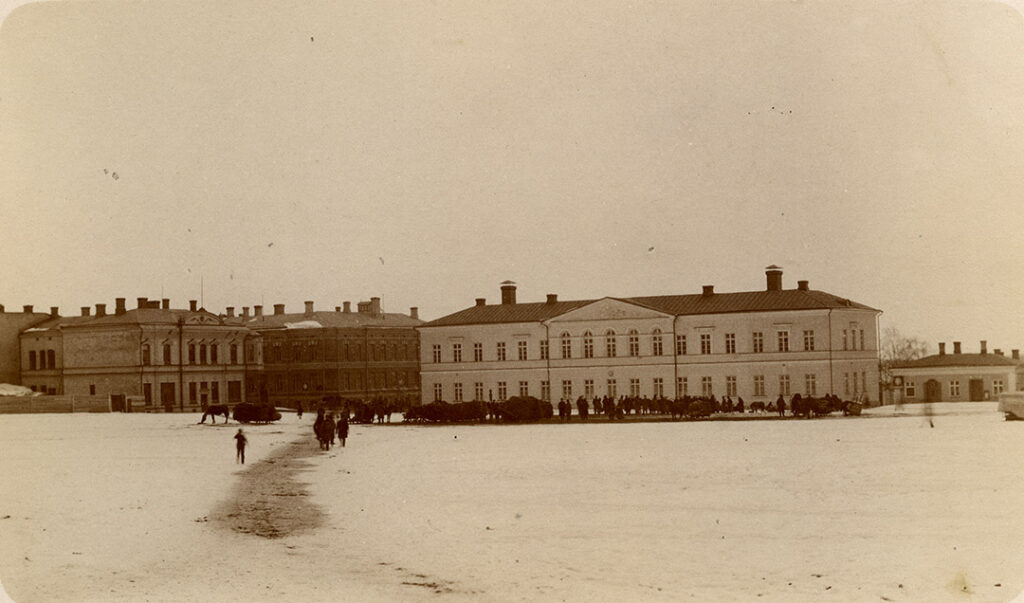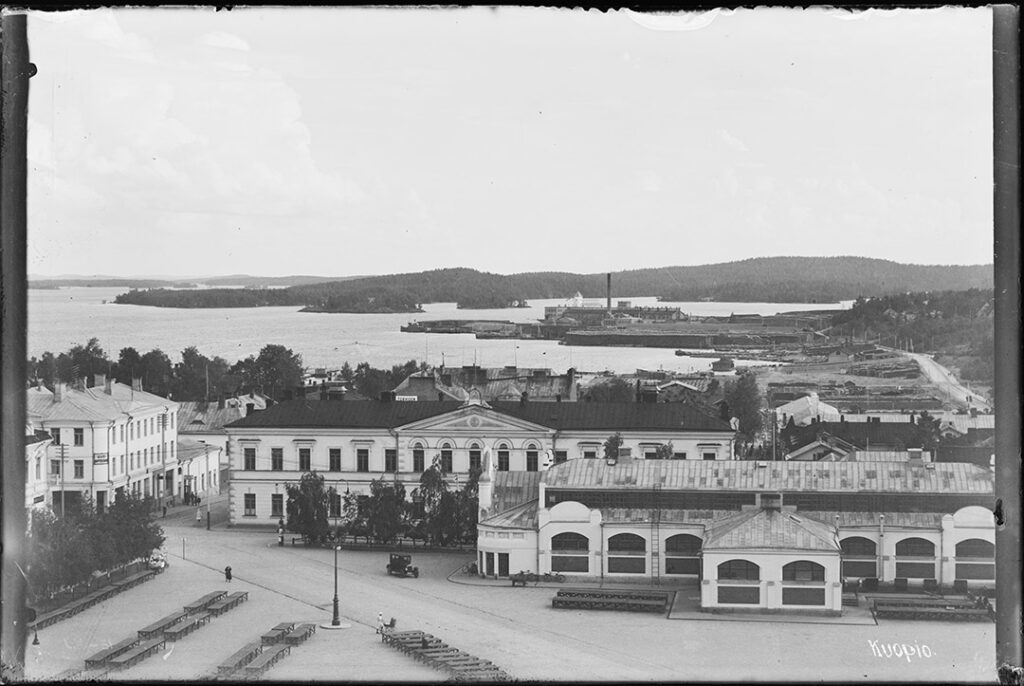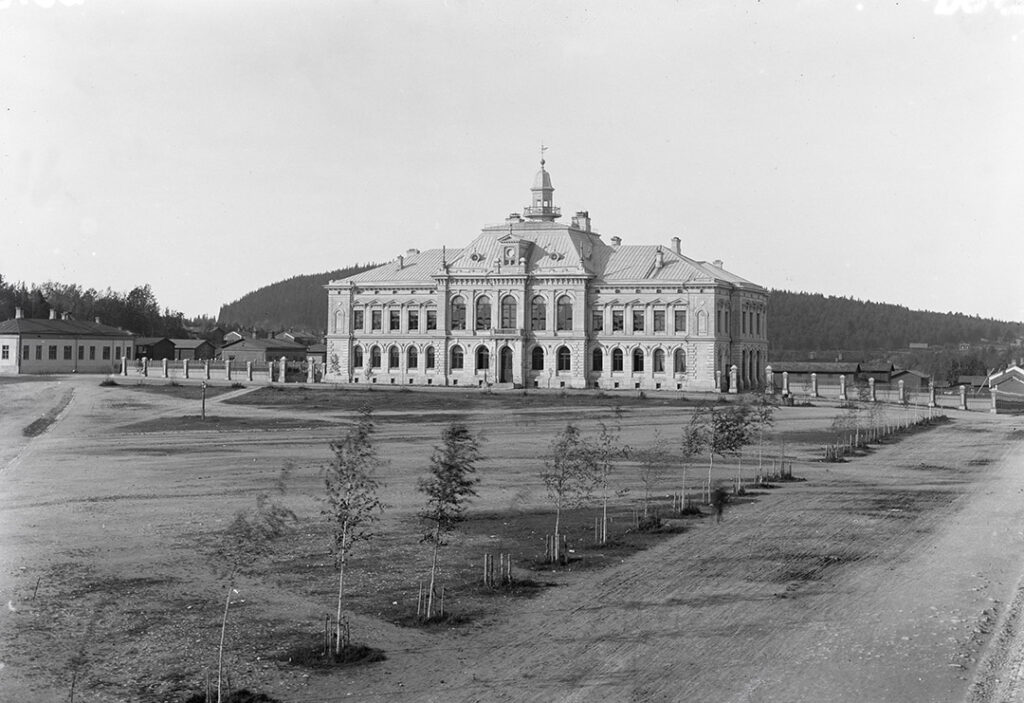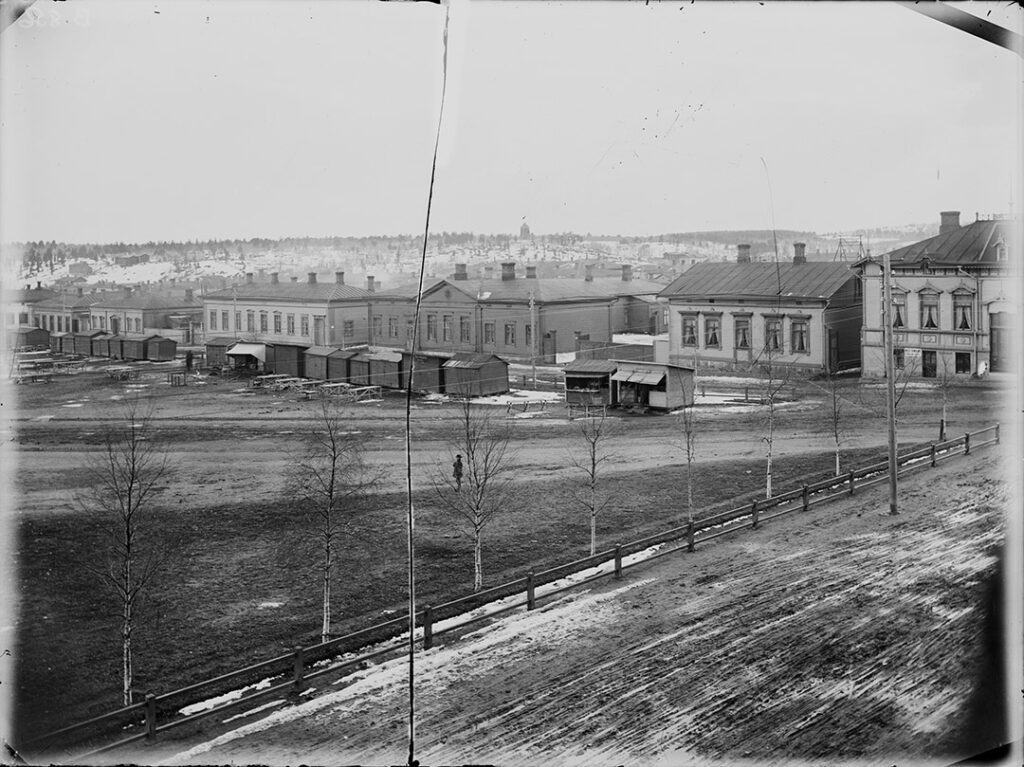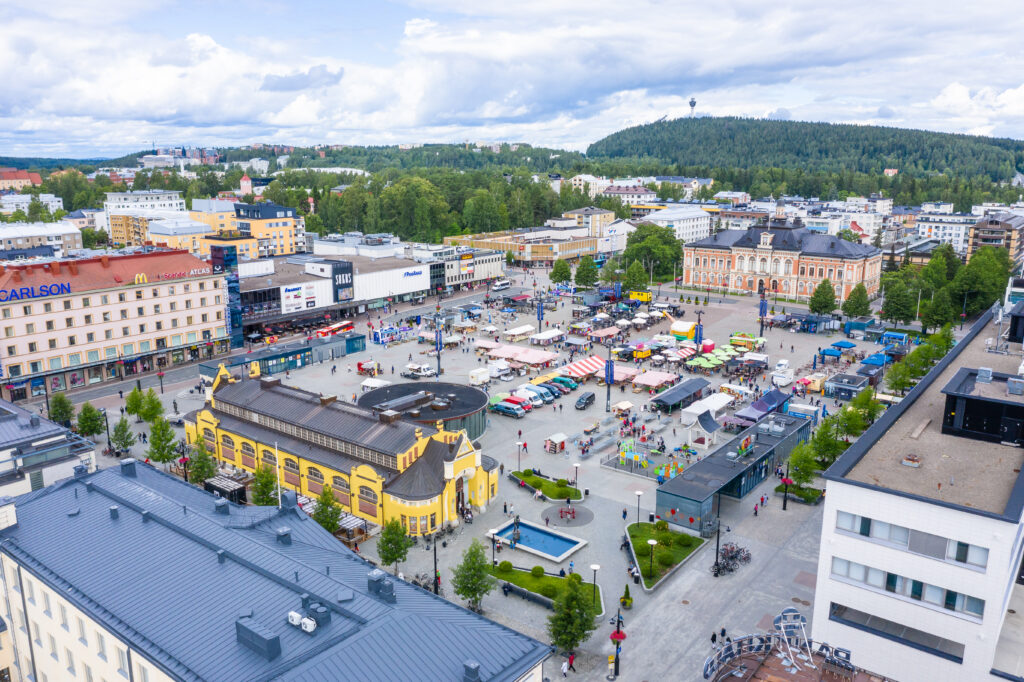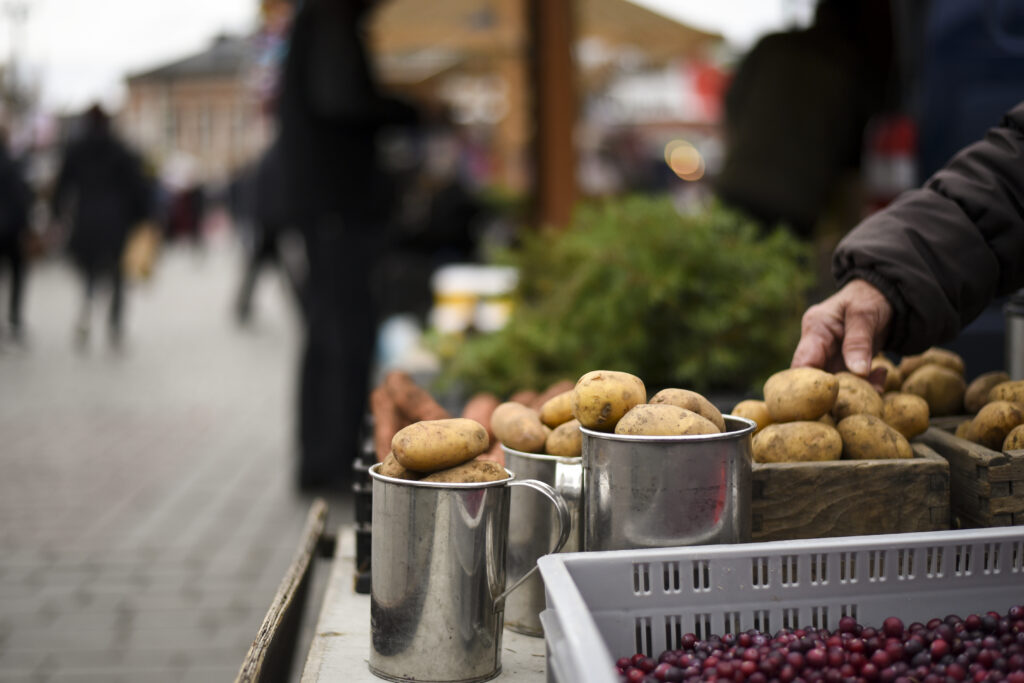Kuopio Market Square
Kuopio Market Square, known as the living room of the city and “Mualiman Napa”, is the heart of the city with long traditions and a colourful history. The area originally served as a horse stable until the market moved from Snellmaninpuisto Park to its current location in 1856. The new location of the market was considered remote at first, but as the city grew, it became a trading center.
Market stalls sell products from food to clothes and unique handicrafts. In addition, it offers its visitors events throughout the year, such as the traditional Autumn and January markets. Kuopio Market Square is one of the city’s most significant attractions. It belongs to the nationally significant built cultural environments determined by the Finnish Museum Agency. There are several valuable buildings and personable statues around the market, such as Veljmies and Siskotyttö.
The historical buildings of the Market Square
- Kuopio City Hall (1885, F.A. Sjöström) on the northern edge of the market square is an impressive two-story neo-renaissance building. Its construction once caused a lot of discussion because the location was perceived as too remote. After completion, the building housed the functions of the administration and judicial institutions, the police and fire department and the public library.
- Kuopio Lyceum (1826, Carl Ludvig Engel) on the south side of the market square was completed for the trivial school in 1826. J.V. Snellman worked here as a teacher when the building was an upper elementary school in the 1840s. After this, it has served as a gymnasium and lyceum. Over the years, several changes and extensions have been made to the building. The original classicist basic figure as well as the later neo-renaissance features are visible in the exterior.
- Kuopio Market Hall (1902, J.V. Strömberg) is one of Finland’s first art nouveau shopping halls. The hall’s architecture has been influenced by the Finnish Pavilion at the World Exhibition in Paris. The facades have ornaments with plant and animal motifs. Over the years, the hall has been renovated and expanded according to the requirements of the time. The fish hall completed in 1914 was replaced by a glass pavilion in 2013.
- Department store Carlson and Hotel Atlas (1930, Eino Pitkänen) is located on the west side of the square. The exterior of the building shows features of both classicism and functionalism. The reliefs on the wall on the Kauppakatu side are made by sculptor Uno Aro. The building has maintained its purpose as a department store and hotel since its completion.
